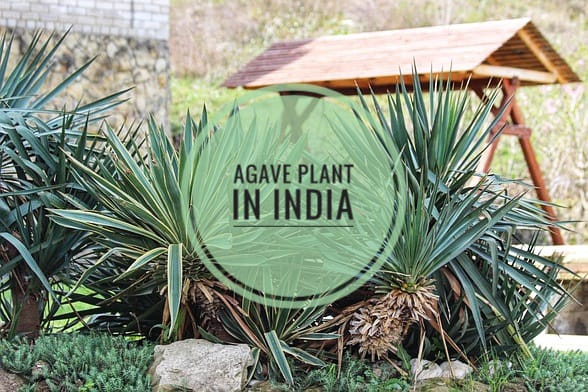If you are here, you want to know about the agave plant in India. Maybe you saw its round leaves in a park, or you heard it does not need much water.
Agave is not new to India. For many years, this plant has been growing naturally in jungles, dry hills, and alongside roads and railway lines .
Often we pass by without knowing its name, but it has been part of our landscapes for a long time, surely you will notice them now. Its hardy nature helps it survive in rocky, poor soil where few other plants grow.
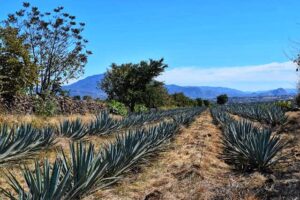
A good news for drink lovers is that like the tequila of Mexico, India also has its own indigenous brand DesmondJi or DJ in the market which is prepared with this same plant.
Introduction
The agave plant is strong, beautiful, and very easy to grow in India. It has thick leaves that form a big circle, almost like a star. Once planted, it needs very little care.
Here’s a quick table about agave:
| Feature | Details |
| Common Name | Agave |
| Botanical Name | Agave spp. |
| Plant Type | Succulent, perennial |
| Native Region | Mexico and the Americas |
| Suitable in India | Yes, especially dry and hot regions |
| Leaf Shape | Thick, fleshy, often with spines |
| Flowering | Once in a lifetime, after many years |
| Uses | Garden plant, fiber, medicine, drinks |
| Water Requirement | Very low |
| Lifespan | 10–30 years depending on type |
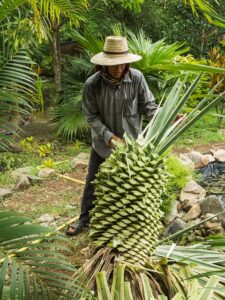
History and Origin
The word Agave comes from Greek. It means “noble” or “admirable.” People gave it this name because the plant looks grand.
Agave first grew in Mexico, Central America, and the Caribbean. The Aztec and Mayan people used it for food, rope, and drinks. Later, the Spanish spread it to many countries.
In India, agave grows well in hot, dry states like Rajasthan, Gujarat, and Andhra Pradesh. Farmers also use it for fiber.
There is also a story about agave that says the agave was transplanted from Mexico to India by Queen Victoria for fencing off the railway lines to protect holy cows from being crushed by trains.
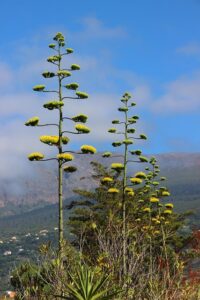
Growing Conditions
Agave is perfect for people who don’t want to spend much time on care. Here’s what it likes:
- Soil: Sandy or loose soil that drains water quickly. Avoid heavy clay.
- Water: Very little. Only water when soil is fully dry.
- Sunlight: Loves the sun. Needs at least 6 hours of direct sunlight daily.
- Temperature: Best between 20°C and 35°C. Can handle heat.
- Humidity: Prefers dry air, so it is perfect for dry regions.
Varieties of Agave
There are many types of agave. Here are some popular ones:
- Agave americana – Large, blue-green leaves. Also called Century Plant.
- Agave angustifolia – Long, narrow leaves. Used for making drinks in Mexico.
- Agave attenuata – Smooth leaves, no spines. Safe for home gardens.
- Agave sisalana – Grown for strong fiber (sisal).
- Agave victoriae-reginae – Small, very pretty. Perfect for pots.
- Agave desmettiana – Green leaves with golden edges. Decorative.
- Agave potatorum – Small and good for rock gardens.
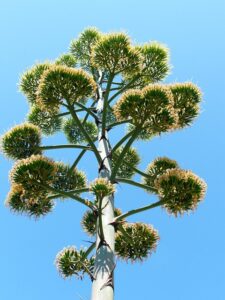
Care Tips
Agave is very easy to care for. Just follow these simple steps:
- Watering: Deep water once, then let soil dry. Do not keep soil wet.
- Pruning: Cut off dry or damaged leaves. Use gloves, leaves are sharp.
- Re-potting: If in pots, re-pot every 3–4 years when roots outgrow.
- Fertilizing: Not much needed. Use cactus fertilizer once in summer.
- Propagation: Plant the “pups” (small baby plants) that grow near the base.
- Flowering: Agave flowers once in its life. After flowering, the mother plant dies but leaves many pups.
Common Problems and Solutions
Agave is tough but sometimes faces problems:
- Over-watering: Roots rot if too much water.
- Solution: water less, fix drainage.
- Pests: Snout weevils attack leaves.
- Solution: remove sick plants quickly, don’t overcrowd.
- Fungal spots: Brown marks on leaves.
- Solution: cut damaged leaves, use fungicide if needed.
- Sunburn: Small plants may burn in very strong sun.
- Solution: give light shade.
- Slow growth: Normal for agave. Just check if it gets enough sun.
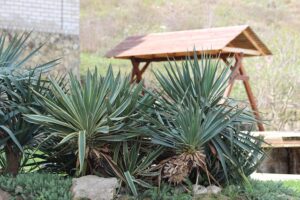
Uses and Benefits
Agave is useful in many ways:
- Ornamental: Looks bold and stylish in gardens, pots, and rock gardens.
- Medicinal: Some types have healing juice used for skin and minor wounds.
- Fiber: Agave sisal gives strong fiber for ropes, mats, and handicrafts.
- Soil protector: Roots hold the soil and stop erosion.
- Eco-friendly: Needs very little water, good for dry gardens.
Tequila and the Agave Plant
When we think of agave, tequila often comes to mind. But not all agaves can make tequila. Only Agave tequilana var. Weber, also called Blue Agave, is officially used for producing tequila.
Here’s how the process works:
Harvesting (Jima) – Mature agave plants are harvested after 7–10 years. The leaves are cut away, leaving the heart, known as the piña, which looks like a large pineapple.
Cooking – The piñas are slowly baked or steamed in ovens to convert complex carbohydrates into simple sugars. Traditionally, brick ovens were used.
Crushing – The cooked piñas are shredded and pressed to extract the sweet juice, called aguamiel.
Fermentation – This juice is placed in fermentation tanks where natural or added yeast turns the sugars into alcohol.
Distillation – The fermented liquid is distilled, usually twice, to purify and increase alcohol content. This results in clear tequila spirit.
Aging (optional) – Some tequilas are bottled directly as Blanco, while others are aged in wooden barrels to become Reposado (aged a few months), Añejo (1–3 years), or Extra Añejo (more than 3 years).
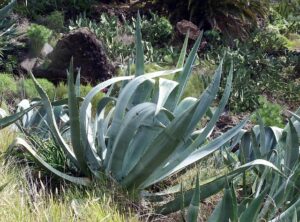
Why tequila is linked to Mexico, not India
In India, agave grows widely, but tequila cannot be labeled as tequila unless it is made in specific regions of Mexico, under strict regulations. However, agave here is still used for ornamental purposes, fiber production, and sometimes experimental beverages, though not tequila itself.
Tequila is a distilled beverage made from the blue agave plant, primarily in the area surrounding the city of Tequila 65 km northwest of Guadalajara, and in the Jaliscan Highlands of the central western Mexican state of Jalisco.
Interesting Facts
- Agave is also called Century Plant because it flowers very late.
- After flowering, the plant dies but leaves baby plants around it.
- Some agave leaves grow longer than 2 meters.
- The Aztecs civilization used agave for food, fiber, and even paper.
- Agave nectar is sold today as a natural sweetener.
FAQsQ1: Can I grow agave at home in India? Q2: How many years before agave flowers? Q3: Can I grow agave in pots? Q4: Is agave safe near kids and pets? Q5: How do I grow new agave plants? |
Conclusion
The agave plant is simple, strong, and stylish. It survives heat, needs very little water, and looks amazing in gardens or pots. With the right soil and sunlight, anyone can grow it easily.
If you want a plant that is both useful and beautiful, agave is a great choice for Indian gardens.
Thanks for reading. Keep growing, keep exploring, and don’t forget to return here at gardeningbud.com for more plants, tips and gardening wisdom.
